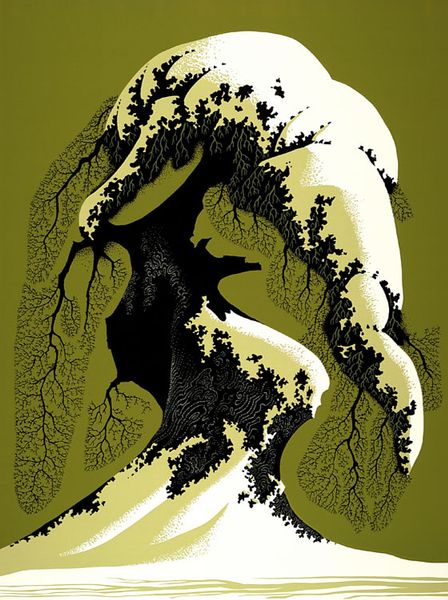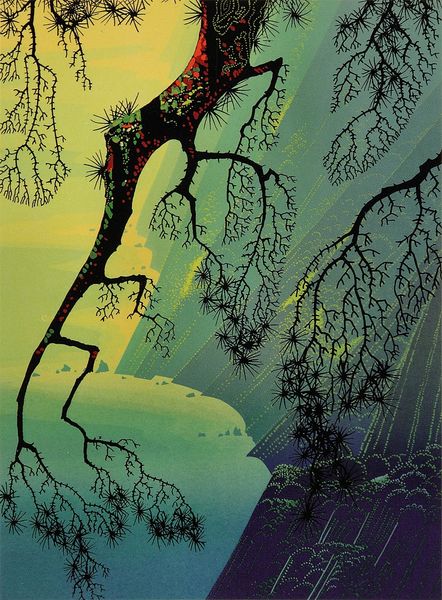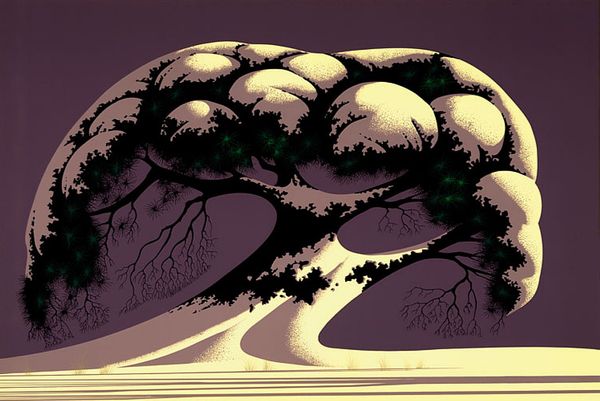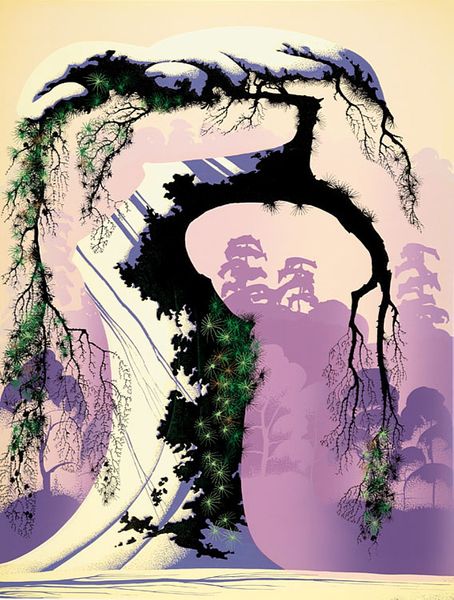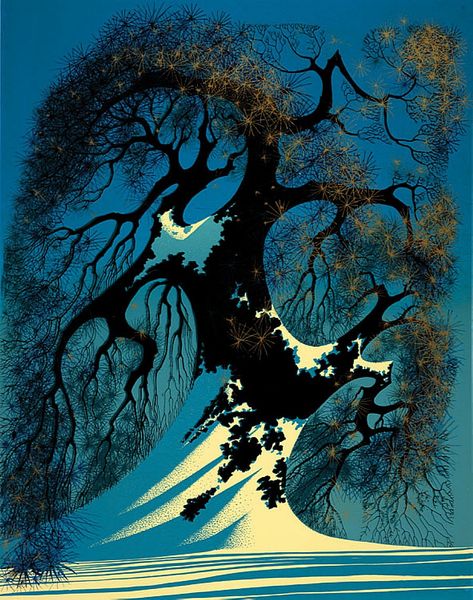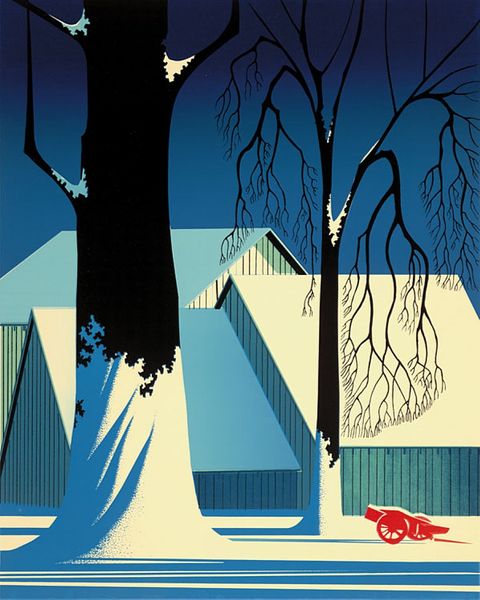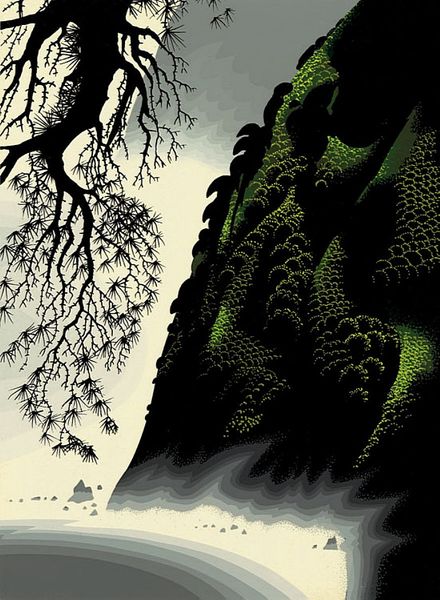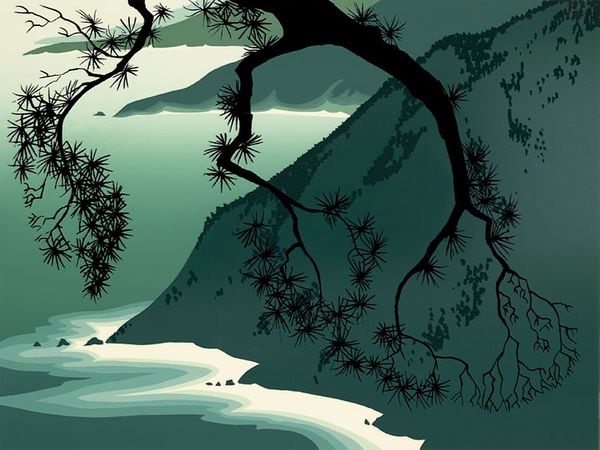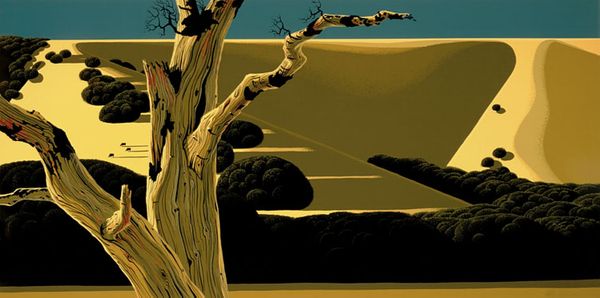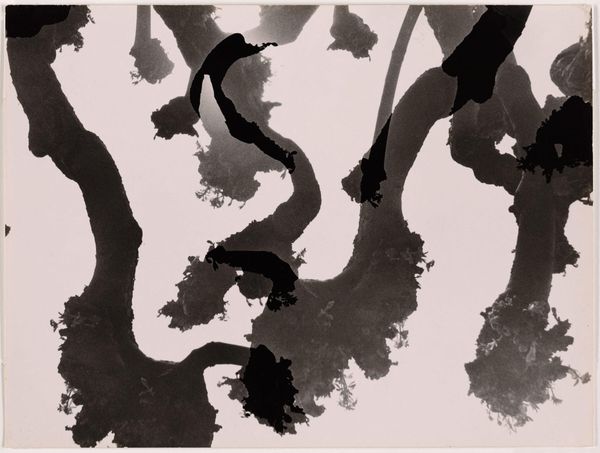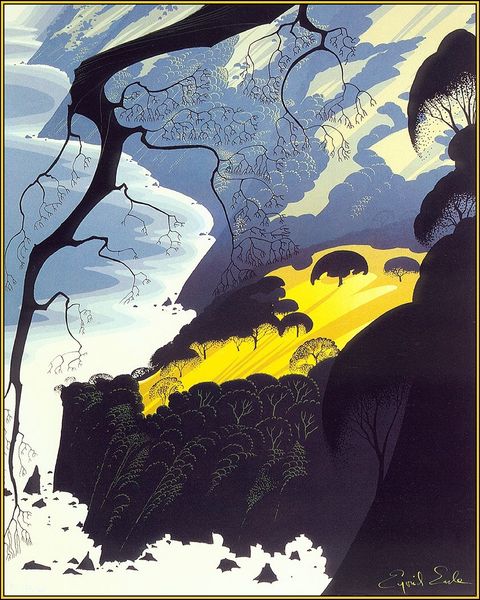
acrylic-paint
#
landscape
#
acrylic-paint
#
abstraction
#
abstract art
#
modernism
Copyright: Eyvind Earle,Fair Use
Curator: Look closely at Eyvind Earle’s “Snow Covered Bonsai” created in 1995. This piece uses acrylic paint to deliver an abstract and landscape theme. Editor: The first impression is so striking, the texture almost pops right off the canvas. The deep greens against the stark whites – it's dramatic and calming at the same time. Curator: Absolutely, and I think it's crucial to view Earle’s landscapes through the lens of postwar American identity. Bonsai trees, particularly, represent control and harmony with nature, concepts deeply entwined with notions of national progress and idealised living during that time. The abstraction distances it from the reality of the manufacturing process, emphasizing instead the aesthetic experience. Editor: The artificiality of Bonsai itself is fascinating; a manipulated natural object becoming subject for an artist, who then re-presents it with manipulated materials such as synthetic paints, creating layers upon layers of removed contexts from raw material to canvas. Earle's simplification directs our attention back to basic form. What effect do you believe his artistic choices had on those who came into contact with his work? Curator: It offered, I believe, a sense of stability and ordered beauty amidst social changes. Consider the backdrop, with gender roles in flux and civil rights gaining ground; the manicured precision of Earle's stylized bonsai likely functioned as a visual metaphor for the possibility of harmony. There's almost a longing for control mirrored here in Earle's craft. Editor: I am inclined to concur that what the piece seems to indicate from an ideological point is something along the lines of a need or deep desire within postwar America’s general subconscious yearning for more ordered societal systems where things "make sense", or are seemingly clear/predictable. As one stares, a type of longing appears… Curator: Well put. His choice of acrylic as well seems very much appropriate and correct considering that we are touching upon themes having to do, ideologically speaking, with a fabricated sense of being where the medium has more inherent, artificial properties within its composition. This then, in turn, further echoes my prior notion pertaining Earle and postwar longing within the United States as well. It would not appear “proper” in my eyes for such thematics as his to manifest within any other context from a material viewpoint. Thank you for enriching my point of view with yours! Editor: And thank you as well, your historical analysis provided crucial perspective!
Comments
No comments
Be the first to comment and join the conversation on the ultimate creative platform.
